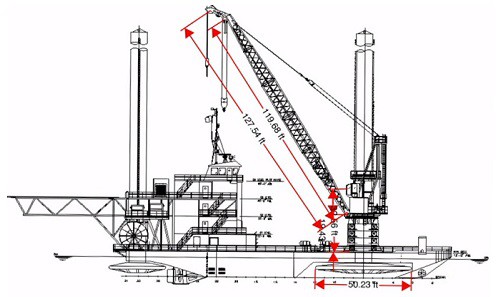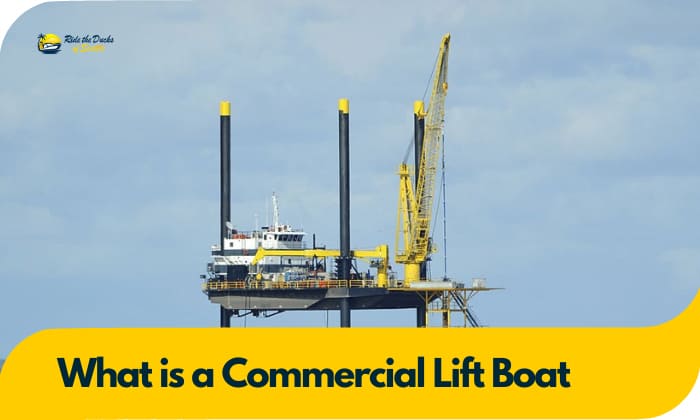Don’t be surprised when you hear some folks ask, “What is a commercial lift boat?” After all, not everyone is a seasoned mariner knowledgeable of all boating terminologies.
A lift boat looks like any motor-driven vessel but with a few special attributes. These characteristics allow the ship to raise itself from the water surface and transform into an offshore support platform.
Sounds complicated? Well, read on.
Table of Contents
What’s a Commercial Lift Boat?
The name says it all! A commercial lift boat is a large vessel with at least three vertical posts sticking out from the ship’s open-deck layout.
These vertical columns are like your hydraulic jacks that extend to raise the ship off the water’s surface.
A power lift boat has other unique features you won’t see on ordinary vessels. For instance, the deck is mostly free of unnecessary elements to facilitate storing, transporting, and moving of supplies to and from offshore operations.
It also has a crane for moving cargo and other materials from the deck to other platforms, and vice versa. You must know that marine cranes for lift boats must comply with API 2C Specification.
A helipad is often present, making a lift boat look like a floating oil rig (except it doesn’t drill into the ocean floor).
1. Uses of a Lift Boat
Owing to its unique attributes, a commercial lift boat is primarily used for supporting offshore operations (i.e., gas well and oil platforms).
For example, suppose a gas or oil company requires maintenance on an offshore platform. In that case, repairing said rig will be challenging if there’s no stable, floating environment to accommodate workers and their equipment.
It’s easy to imagine how lift boats’ self-elevating attribute makes it useful in other industries. Examples are construction, mining, and wind energy (such as installing wind turbines and wind farm constructions).
2. How a Lift Boat Works

A mammoth hydraulic jacking system differentiates offshore lift boats from conventional vessels. Three to four gigantic legs extend toward the seafloor and push the ship’s hull, raising it off the water surface. It’s like an instant offshore oil platform.
Weeks before the lift boat arrives at the location, a team studies the seafloor to determine its stability. They must also ensure the extendable legs don’t crush into pipelines and other obstructions.
Experts analyze the location to see if the seafloor can accommodate the lift boat’s legs without sinking. With a green signal, the ship’s captain maneuvers the lift boat into the designated position.
A mechanism activates the hydraulic jacks, and they lower into the seafloor. They raise the lift boat until its keel is just clear of the waves. The team fills the tanks with water to increase the ship’s weight and allow it to sink (controllably) into the muddy seafloor.
If the lift boat remains stable after several hours, the crew dumps the water and increases the lift boat legs’ height to the platform’s optimal working level.
And now, you have a stable platform alongside a more permanent offshore oil or gas rig.
Conclusion
What is a commercial lift boat? This ship looks and functions like any other vessel, except it has a special ability no ship can accomplish. It’s an indispensable solution for big-name oil and gas players, allowing them to support their offshore operations.
Although lift boats are beyond the reach of ordinary boaters, one cannot help but appreciate the technologies integrated into its design. It’s like a real-life Transformer, converting from a conventional ship into an offshore oil rig-like support platform.

Ten years of enjoying countless trips on boats never made me love them any less! So I am here to put all those experiences into good use for other boaters who want to have a safe and fun trip with their friends and families.


